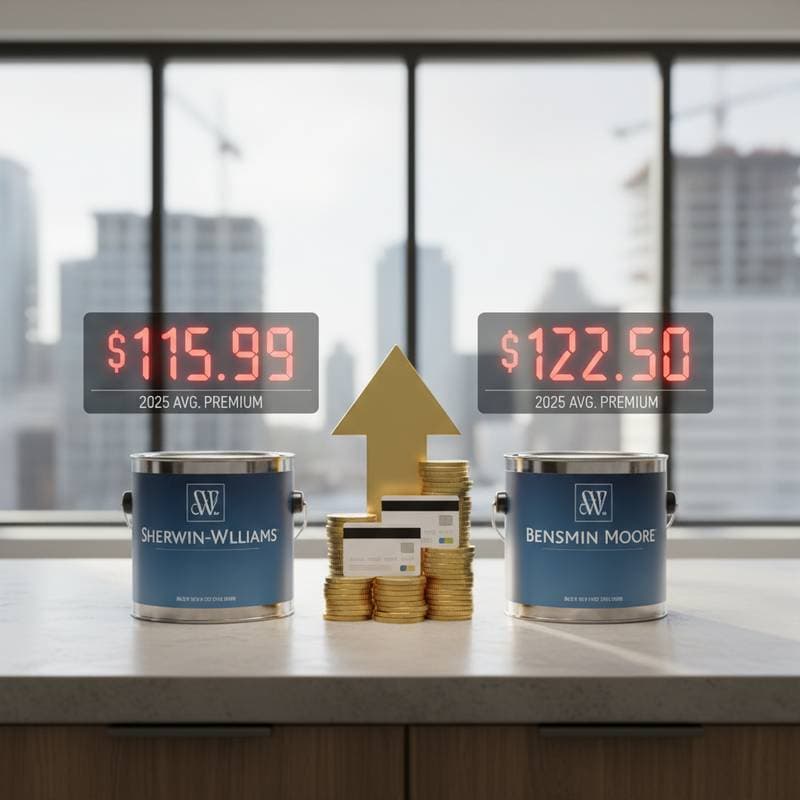Understanding the 2025 EPA Lead Regulations and Their Impact on Home Preparation
Homeowners embarking on repainting or renovation efforts in structures built before 1978 face updated Environmental Protection Agency guidelines. These regulations aim to minimize lead exposure risks for families and workers during projects involving painted surfaces. The changes elevate expenses related to labor, supplies, and verification processes, yet they enhance overall safety. Grasping the specifics of these costs enables better financial planning and reduces unexpected charges.
Detailed Project Cost Analysis
Typical Cost Categories
Projects vary based on scope, with preparation forming a significant portion under the new rules.
- Basic efforts, such as a single room, range from $2,000 to $3,500.
- Standard undertakings covering multiple areas fall between $3,500 and $6,000.
- Premium initiatives, including extensive surfaces or complex features, span $6,000 to $9,000.
Core Components of Expenses
Every lead-safe project incorporates essential elements to meet EPA standards.
- Labor from EPA-certified teams handles setup, execution, and final cleanup.
- Containment supplies like heavy-duty plastic sheeting and adhesive tape create barriers.
- HEPA-equipped vacuums remove dust, alongside surface swab tests for lead detection.
- Disposal methods comply with hazardous waste protocols for contaminated materials.
Additional Expense Drivers
Certain conditions push costs beyond baseline estimates.
- Expanded areas or numerous rooms demand more resources.
- Deteriorated paint layers necessitate reinforced containment to prevent particle spread.
- Independent inspectors conduct clearance exams post-work.
- Textured or intricate surfaces require specialized dust mitigation techniques.
Influences on Total Expenditures
| Factor | Cost Influence | Specific Instances |
|---|---|---|
| Age and Condition of Home | Substantial | Fractured paint or deteriorating plaster demands meticulous handling |
| Site Accessibility | Moderate | Confined spaces or elevated areas requiring ladders or platforms |
| Verification Processes | Substantial | Laboratory analysis and record-keeping for audits |
| Local Labor Variations | Fluctuating | Metropolitan regions with elevated wage structures amplify totals |
Breakdown of the $800 Cost Increment
The 2025 revisions to EPA lead-safe practices intensify preparation and confirmation steps. Contractors now implement broader protective zones, incorporate redundant safeguards, and compile photographic and written records of procedures. This $800 upcharge generally accounts for extended workforce time, superior-grade supplies, and administrative tasks.
Expanded Use of Containment Supplies
Earlier standards permitted basic plastic coverings, but current mandates require reinforced, multi-ply barriers over floors, entryways, and ventilation systems. Contractors procure additional quantities of durable sheeting, high-adhesion tapes, and secure containment pouches. These enhancements alone contribute $150 to $250 in material outlays.
Prolonged Preparation and Decontamination Phases
Teams devote more time to establishing comprehensive seals and executing thorough decontamination. Each extra hour incurs charges at premium rates for certified specialists, surpassing conventional painting fees. Such extensions typically accumulate $300 to $400 in labor expenses.
Rigorous Record-Keeping and Examination Protocols
Professionals document barrier installations, photograph key stages, and archive compliance records for potential reviews. Final evaluations involve intensified dust sampling through wipe tests. Engaging external labs or verifiers incurs fees of $100 to $200.
Regulated Waste Management
Dealing with lead-bearing debris follows stringent transport and disposal guidelines. Teams utilize designated containers, arrange specialized hauling, and pay designated facility surcharges. These measures add $50 to $100, rounding out the cumulative cost rise evident in final billing.
Guidance on Professional Services Versus Self-Managed Efforts
Handling lead-infused paint demands expertise beyond routine home maintenance. EPA rules mandate certified involvement for regulated activities, with violations risking penalties or exposure hazards. Individuals scraping or abrading aged coatings without barriers risk dispersing toxic particles into living spaces.
Limited self-directed tasks suit minor repairs on confirmed non-lead substrates. Acquire an affordable detection kit to assess potential contamination prior to starting. Detection of lead prompts immediate consultation with qualified contractors to uphold health protections and legal compliance.
Criteria for Choosing a Qualified Contractor
Homeowners evaluate potential hires through targeted inquiries and documentation review.
- Solicit EPA certification identifiers to confirm completed training programs.
- Demand evidence of liability coverage tailored to lead operations.
- Review testimonials from comparable lead abatement assignments.
- Insist on itemized proposals delineating workforce, supplies, and waste handling charges.
Strategies for Effective Project Planning
Anticipate needs by scheduling an initial site assessment with a certified specialist. This evaluation identifies lead presence, estimates preparation demands, and outlines phased timelines. Budget allocation should reserve 20 to 30 percent for compliance elements, allowing flexibility for unforeseen conditions like hidden damage.
Coordinate work during favorable seasons to minimize disruptions, and prepare the household by relocating valuables. Post-project, conduct independent air quality checks if concerns persist. These steps ensure smooth execution, cost control, and sustained safety benefits for occupants.
Common Inquiries About Lead-Safe Preparations
What Drives the Rise in Preparation Expenses?
Extended protective perimeters, supplementary supplies, additional workforce duration, and precise logging form the basis. Certified teams adhere to elaborate sequences that demand greater resources, resulting in the $800 average escalation for typical undertakings.
How Much Time Does Surface Preparation Require?
Compact areas might span one to two days for barriers and decontamination. Comprehensive home efforts extend over multiple days, incorporating containment verification and residue clearance prior to subsequent painting stages.
Is Self-Performed Lead Abatement Advisable?
Professionals strongly discourage it due to severe health implications and regulatory breaches. Individuals may manage lead-free elements safely, yet certified intervention remains essential for any suspected contamination scenario.
Key Questions for Prospective Contractors?
Inquire about EPA credentials, protective insurance, and project-specific endorsements. Seek comprehensive breakdowns covering barriers, examinations, decontamination, and debris management.
Methods to Confirm Adherence to Protocols?
Observe erected shields, secured airways, and marked refuse containers on site. Teams don appropriate safeguards and furnish records upon solicitation.
Consequences of Non-Adherence?
Regulatory infractions invite monetary sanctions and internal pollution. Critically, they endanger residents and personnel through unchecked lead particulate dissemination. Vigilance in protocol enforcement safeguards all involved parties.



